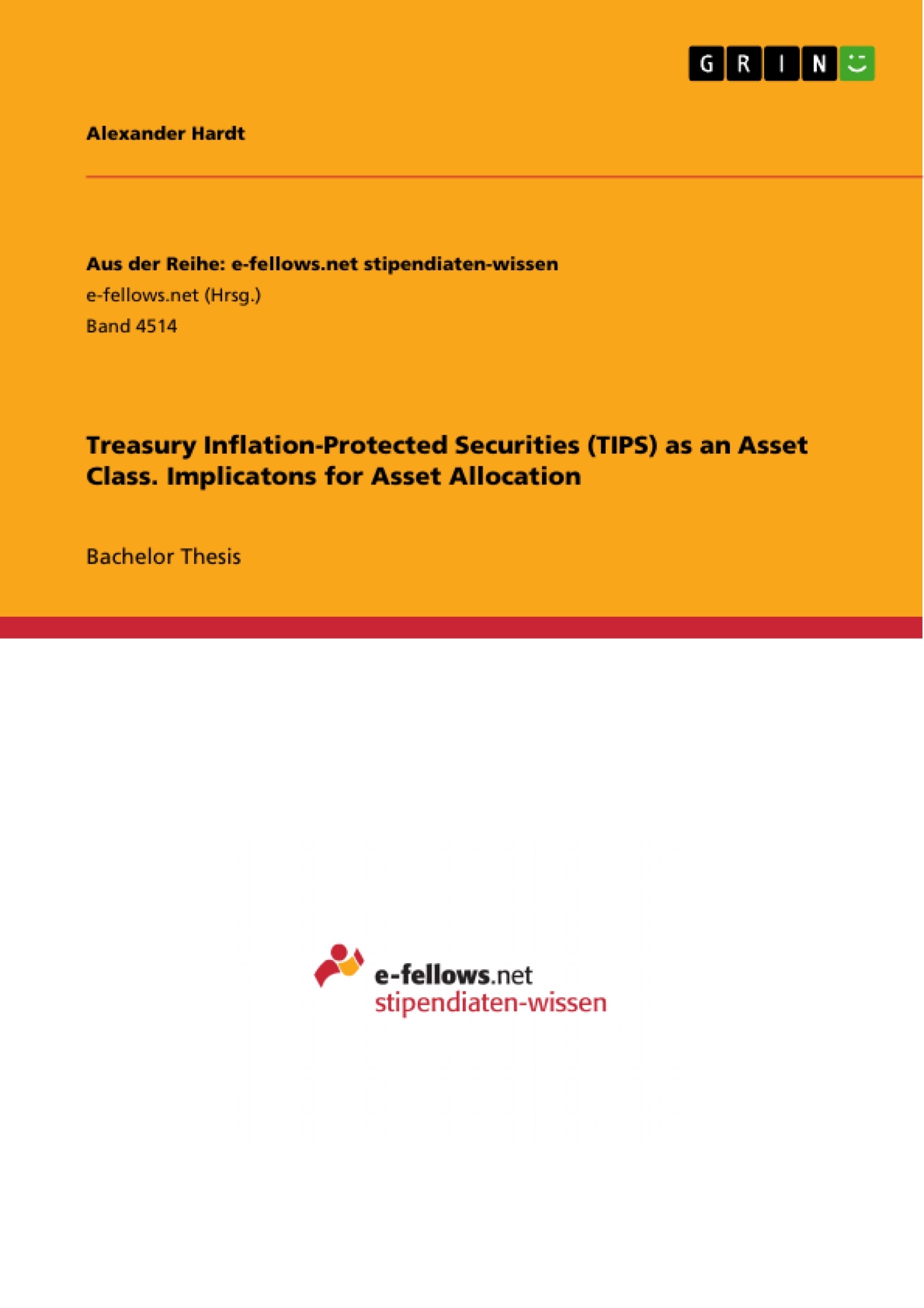This thesis examines optimized portfolios of three investor types during four different time intervals ranging from 1998 to 2013 to determine if the inclusion of Treasury Inflation-Protected Securities (TIPS) has benefits for institutional investors such as pension plans, university endowments, foundations and sovereign wealth funds. The three investor types used in this study differ in their risk tolerance, with the more risk-averse investor type choosing not to include certain asset classes in his investment portfolio. The efficient frontier algorithm, developed by Prof. Harry Markowitz, is used to determine whether the inclusion of TIPS improves the risk/return profile of the portfolio. Sharpe ratio, developed by Prof. William Sharpe, is used to measure a portfolio’s risk adjusted performance. The study found that the benefits of the inclusion of TIPS in a portfolio vary by time period and investor type. While all investors were able to improve their risk return profile, the more risk-averse investor type benefits to a larger degree from the inclusion of TIPS. Furthermore, a significant increase in the financial efficiency was only observed in the 1998 to 2002 period. Therefore, the researcher concludes that the TIPS market is quite dynamic and investors need to take into account forward-looking information to profit from the inclusion of TIPS in investment portfolios.
Inhaltsverzeichnis (Table of Contents)
- I. Introduction
- II. Features
Zielsetzung und Themenschwerpunkte (Objectives and Key Themes)
This thesis examines the benefits of including Treasury Inflation-Protected Securities (TIPS) in investment portfolios for various institutional investors, including pension plans, university endowments, and sovereign wealth funds. The research aims to determine if the inclusion of TIPS improves the risk-return profile of portfolios for different investor types with varying risk tolerances. The study utilizes the efficient frontier algorithm and Sharpe ratio to assess the performance of portfolios with and without TIPS.
- Impact of TIPS on portfolio risk-return profiles for different investor types.
- Assessment of TIPS' effectiveness in different time periods.
- Evaluation of TIPS' potential as a separate asset class.
- Analysis of the reasons behind the government's issuance of indexed bonds and investor demand.
- Exploration of the benefits of TIPS for institutional investors.
Zusammenfassung der Kapitel (Chapter Summaries)
I. Introduction
The introduction provides an overview of Treasury Inflation-Protected Securities (TIPS), their history, and their purpose. It explores the motivations behind the government's decision to issue TIPS, including the potential for reduced borrowing costs and the ability to manage inflation risk. The chapter also discusses the various types of investors who participate in the TIPS market and the different reasons for their involvement.
II. Features
This chapter delves into the features of TIPS, explaining how their principal value is adjusted monthly based on changes in the Consumer Price Index (CPI). It highlights the benefits of TIPS, such as protection against inflation and a guaranteed floor value in deflationary environments. The chapter also compares TIPS to similar securities issued in other countries.
Schlüsselwörter (Keywords)
This paper focuses on Treasury Inflation-Protected Securities (TIPS), asset allocation, risk-return profiles, institutional investors, pension plans, university endowments, sovereign wealth funds, efficient frontier algorithm, Sharpe ratio, and inflation risk.
- Citation du texte
- Alexander Hardt (Auteur), 2014, Treasury Inflation-Protected Securities (TIPS) as an Asset Class. Implicatons for Asset Allocation, Munich, GRIN Verlag, https://www.grin.com/document/276591



